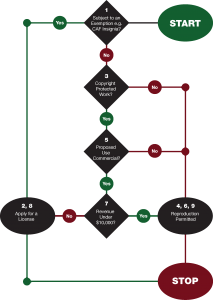Business development teams have become a central part of the sales process.
Business development is highly influential to what happens at the top of your sales funnel. The correspondence between business development reps (BDRs) and leads can set the tone for the entire sales process.
This is where business development metrics play a vital role. They need to measured and assessed to ensure your business development reps are doing everything they can to set meetings with qualified leads. At first it may be difficult for managers to identify and track the right metrics.
Let’s take a look at some of the important aspects of business development and the metrics that help you determine the effectiveness of your business development program.
What Is Business Development?
Business development refers to the process your team executes at the top of the sales funnel, during the early stages of the sales cycle for inbound lead qualification. This process involves conducting customer research, prospecting, initial contact, and lead qualification.
Essentially, business development teams are responsible for identifying the best prospects to reach out to so they can be thoroughly vetted before being passed on to sales reps as a sales qualified lead (SQL).
This allows sales representatives to save time and gain the most value when they are only focusing on sales qualified leads.
Business development representatives must apply their in-depth product knowledge, customer centricity, awareness of the buyer’s journey, active listening, and self-motivation to engage prospects and learn what their specific pain points are to discuss how their company’s solutions can help.
The Basics of a Business Development Program
Business development programs differ based on an organization’s overall goals, but they all have these components in common.
Technical Fundamentals
All sales team members must have basic technical skills in order to use the technology an organization has to effectively sell the product or service they are recommending.
These technical skills are unique to every organization since every business uses different software to sell a variety of products and services.
Organizations that sell highly technical or complex products may need business development reps with prior experience related to their products, or they may require elaborate sales training.
An effective business development program includes sales reps who know the products they offer inside and out. They must be prepared to not only use the technology given to them to manage leads, but they must also be able to answer a variety of questions related to the products or services they are selling.
Sales Skills
BDRs do not focus on closing deals, but they play an important role in the sales process. They must know how to create value for their customers so that they can engage them and generate more interest.
Business development programs should have a strong focus on improving BDR sales skills. Some important sales skills to consider include the following:
- Active listening
- Prospecting
- Discovery
- Communication
- Rapport building
- Objection handling
Coach and inspire your business development team often to help them build confidence in their ability to sell effectively.
Education
A large part of a business development program is customer education. BDRs educate prospects by answering their questions. Successful BDR programs focus on educating prospects in a way that entices them. This helps lead them to a purchasing decision.
BDRs can answer important questions and educate prospects in many different key areas before booking an appointment. Those areas include the following:
- Technical details: “How do I optimize my landing page on (X software) for more conversions?”
- Capabilities: “Can your product alleviate (their pain points) and give me what I need?”
- Customer successes and case studies: “Do you have clients in the (relevant industry) that achieved success with your product?”
- Plan structures: “What features come with this plan?” “Can I add more features to my plan?” “Are there any variations?”
- Process: “What happens after I purchase this product?”
- Benefits and features: “What’s the difference between what you and your competitors offer?” “What is the point of (specific tool)?”
Lead Management
Lead management includes reaching out to prospective customers, recording detailed notes in a customer relationship management system (CRM), following up with them, and developing a positive relationship through continuous nurturing.
Business development programs with excellent lead management processes are likely to pass along more qualified leads who close.
Lead management documents a prospect’s full set of experiences and interactions with your company. This makes it easy to analyze the way a person was converted from a prospect to a lead, before they’re closed as a paying customer.
The data collected from that analysis allows you to continuously tweak and improve your business development strategies to improve the program.
Warm Handoff Process
Once a lead becomes an SQL, it is then time for the handoff process to an account executive or sales representative.
Warm handoffs refer to the way BDRs make a smooth transition between themselves and sales reps.
Business development programs ensure a warm handoff so leads don’t slip through the cracks. This means the handoff process must be:
- Aligned: BDRs and sales reps agree that the lead is ready for handoff.
- Fairly distributed: BDRs may want to continuously pass hot leads to the top closers or to their professional BFFs, but handoffs should be distributed equally so as not to overwhelm one person.
- Followed up with: One missed call, email, or unclear message can cause a lead to slip through the cracks.
- Given with enough information: BDRs must provide sales team members with all the data on the leads so the sales rep can be prepared to pick up where they left off.
Let’s discuss the business development process in more detail now that you understand how a business development program works.
The Business Development Process
Business development processes should start with buyer personas and objectives. This way, there is a starting point for organizations to begin the business development process.
Here are the seven steps that occur in a successful business development process:
1. Identify SQLs.
You can identify sales qualified leads based on the following:
- Demographics: Their location, company size, and industry.
- Authority: The person’s specific role in their organization.
- Engagement: Their willingness to engage with the sales team.
- Pain points and product fit: The alignment between your solutions and their problems.
- Budget: The amount they can spend on a solution.
- Urgency: The current timeline they follow.
2. Align Sales and Marketing Efforts.
Marketing materials should be designed around your organization’s definition of a sales qualified lead.
Content should be dedicated toward attracting prospects that may fit the criteria, and sales should follow through with their sale process based on the qualification parameters.
3. Establish a Process and Assign Roles.
Design your process for inbound and outbound leads, and document it so you can distribute it throughout your team.
Make sure your team members clearly understand their responsibilities and how they should go about handling each prospect type.
4. Engage Leads via Phone Call, Email, and Other Channels.
Talk to your leads and build rapport to help them cultivate trust with you and your organization. This can be accomplished through several channels.
5. Qualify the Likelihood Your Lead Will Purchase a Product.
Ask the important questions during your prospecting calls, and don’t shy away from questions about pricing packages.
Confirm these details to determine if they’re worth further engagement.
6. Determine Whether or Not You Should Pursue a Lead.
If you have reached out to a lead multiple times with no response, it may be time to let them go, depending on their timeline.
Generally speaking, your lead can take these two paths:
- Let go of a lead if the resources required for you to sell them on your product outweigh the potential value.
- If potential value justifies further allocation of resources, then vet them into the sales pipeline as an SQL.
7. Hand Over Lead Ownership to Account Executives.
Introduce your SQL to an account executive or sales rep. Make sure the handoff is warm.
Lastly, set a date for the SQL and account executive to meet to move forward with the customer journey.
5 Essential Business Development Metrics You Need to Monitor
Tracking the success of your business development program is essential for further growth so you can win more deals. Fortunately, there is a set of comprehensive performance indicators you can track to properly manage your pipeline, sales reps, and revenue growth.
Review some of the key metrics you should be analyzing to ensure your business development reps are heading in the right direction.
Potential ROI
Before you can begin paying attention to other business development metrics, you need to estimate your return on investment from BDR activities.
The minimum ROI you choose varies based on your industry and the size of your organization.
To start, align the with industry standards by conducting research to see what these benchmarks are and how you should gauge them. Choose numbers that make sense for your sales team goals so you don’t set unrealistic targets for your BDR team.
The more realistic you are about the ROI your BDRs can generate, the better. Measuring your ROI correctly will provide you with an indication of how ready your sales team is to handle qualified leads.
BDR Activity Metrics
BDR activity metrics include any activity within your CRM software that can be tracked and measured. Keeping your attention on activity metrics will help you to predict BDR performance more accurately.
There are always challenges that BDRs will face , but you can be more prepared for these challenges by developing your data-driven knowledge to avoid common mistakes and pitfalls.
Some activity areas you may check when you run reports include:
- Activities per prospect
- Activities per BDR
- Prospects per qualified sales opportunity
Appointment Completion Rates
The number of appointments your BDRs make is important, but you should be more concerned with how many of those appointments are actually completed.
With this information, you can gain a better understanding of your prospective customers and get essential feedback on your outreach methods by checking the metrics for accepted meetings.
Some of the factors that may contribute to a low appointment rate include:
- Quality of leads
- The nature of the target industry
- BDR performance problems
A good standard measurement for appointment completion metrics is one appointment scheduled for ever 100 calls made.
Then, you can decide how many meetings you expect to end up being rescheduled or cancelled. Decide what your completion rate should be to give your BDRs a target to hit.
For instance, you may decide that out of every 10 appointments made, nine of them are completed. This is a 90 percent completion rate.
Keep in mind that marketing qualified inbound leads tend to have a higher meeting completion rate compared to cold leads.
Number of Records Added to the CRM Database
When on a call, BDRs should make sure they are following proper prospect discovery to determine the contact’s authority to purchase products or services. If needed, they must seek out other points of contact who make the purchasing decision.
This can be accomplished through account research associated with manual prospecting efforts through channels like LinkedIn.
These records should be recorded in the CRM or another database so they can be measured to make sure BDRs are contributing to pipeline growth. This ensures that reps’ actions are aligning with the overall goal of streamlining sales processes for closers, rather than simply hitting quotas.
Pipeline Movement Using a Lead Rating System
Leads shouldn’t enter a pipeline and stay where they are. They must move further down the pipeline, and it is a BDR’s job to make sure this happens. Each touch a BDR has with a prospect should focus on moving them toward becoming an SQL.
This means that BDRs shouldn’t make the same calls and say the same things over and over again to leads when they follow up. Instead, they should nudge and nurture them closer to conversion each time they touch base.
Check the lead rating of your BDRs on a regular basis to find out if your reps are asking the right questions and providing the correct answers to generate their lead’s interest.
When you experience too much negative movement in the pipeline or a lack of movement, you likely need to make adjustments to your business development strategies.
Business development is a key part of organizations that utilize modern sales tactics, but with business development comes a host of unique challenges. Using a data-driven approach to business development metrics can help you to optimize performance to overcome these obstacles.
This will allow you to maintain high performance levels over a period time.
Business & Finance Articles on Business 2 Community
(67)






